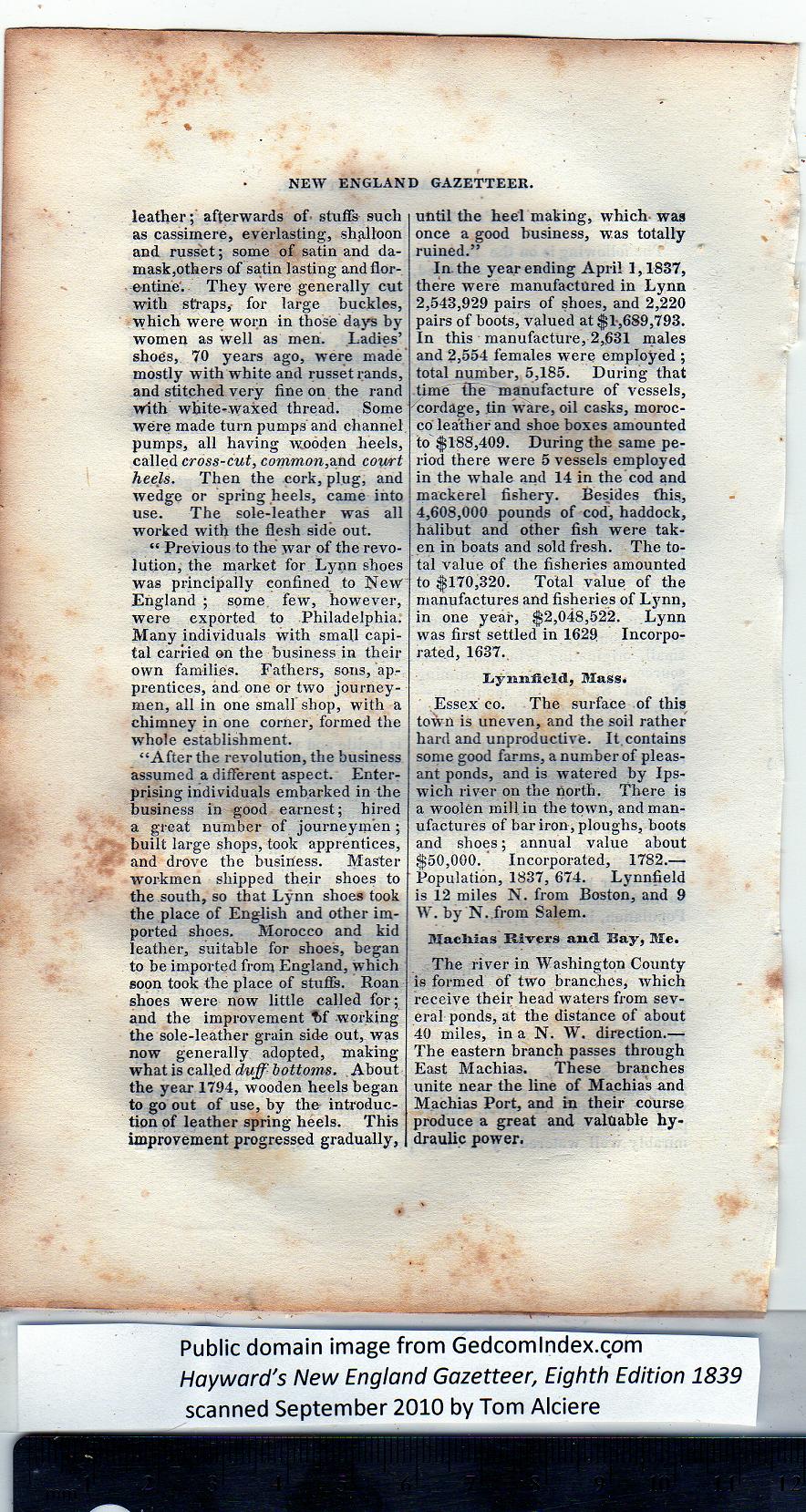|
leather; afterwards of stuffs such
as cassimere, everlasting, shalloon
and russet; some of satin and da-
mask,others of satin lasting and flor-
e-ntine'. They were generally cut
with straps,- for large buckles,
which were worn in those days by
women as well as men. Ladies’
shoes, 70 years ago, were made
mostly with white and russet rands,
and stitched very fine on the rand
with white-waxed thread. Some
were made turn pumps and channel
pumps, all having wooden heels,
called cross-cut, common,and court
heels. Then the cork, plug, and
wedge or spring heels, came into
use. The sole-leather was all
worked with the flesh side out.
“ Previous to the war of the revo-
lution, the market for Lynn shoes
was principally confined to New
England ; some few, however,
were exported to Philadelphia.
Many individuals with small capi-
tal carried on the business in their
own families. Fathers, sons, ap-
prentices, and one or two journey-
men, all in one small shop, with a
chimney in one corner, formed the
whole establishment.
“After the revolution, the business
assumed a different aspect. Enter-
prising individuals embarked in the
business in good earnest; hired
a great number of journeymen;
built large shops, took apprentices,
and drove the business. Master
workmen shipped their shoes to
the south, so that Lynn shoes took
the place of English and other im-
ported shoes. Morocco and kid
leather, suitable for shoes, began
to be imported from England, which
soon took tbe place of stuffs. Roan
shoes were now little called for;
and the improvement t>f working
the sole-leather grain side out, was
now generally adopted, making
what is called duff bottoms. About
the year 1794, wooden heels began
to go out of use, by the introduc-
tion of leather spring heels. This
improvement progressed gradually,
until the heel making, which- was
once a good business, was totally
ruined.” |
In the year ending April 1,1837,
there were manufactured in Lynn
2,543,929 pairs of shoes, and 2,220
pairs of boots, valued at $1,689,793.
In this manufacture, 2,631 males
and 2,554 females were employed ;
total number, 5,185. During that
time the manufacture of vessels,
cordage, tin ware, oil casks, moroc-
co leather and shoe boxes amounted
to $188,409. During the same pe-
riod there were 5 vessels employed
in the whale and 14 in the cod and
mackerel fishery. Besides this,
4,608,000 pounds of cod, haddock,
halibut and other fish were tak-
en in boats and sold fresh. The to-
tal value of the fisheries amounted
to $170,320. Total value of the
manufactures and fisheries of Lynn,
in one year, $2,048,522. Lynn
was first settled in 1629 Incorpo-
rated, 1637.
Lynnfield, Mass.
Essex co. The surface of this
town is uneven, and the soil rather
hard and unproductive. It. contains
some good farms, a number of pleas-
ant ponds, and is watered by Ips-
wich river on the north. There is
a woolen mill iu the town, and man-
ufactures of bar iron, ploughs, boots
and shoes; annual value about
$50,000. Incorporated, 1782.—
Population, 1837, 674. Lynnfield
is 12 miles N. from Boston, and 9
W. by N. from Salem.
Macliias Rivers and Bay, Me.
The river in Washington County
is formed of two branches, which
receive their head waters from sev-
eral ponds, at the distance of about
40 miles, in a N. W. direction.—
The eastern branch passes through
East Machias. These branches
unite near the line of Machias and
Machias Port, and in their course
produce a great and valuable hy-
draulic power. |
